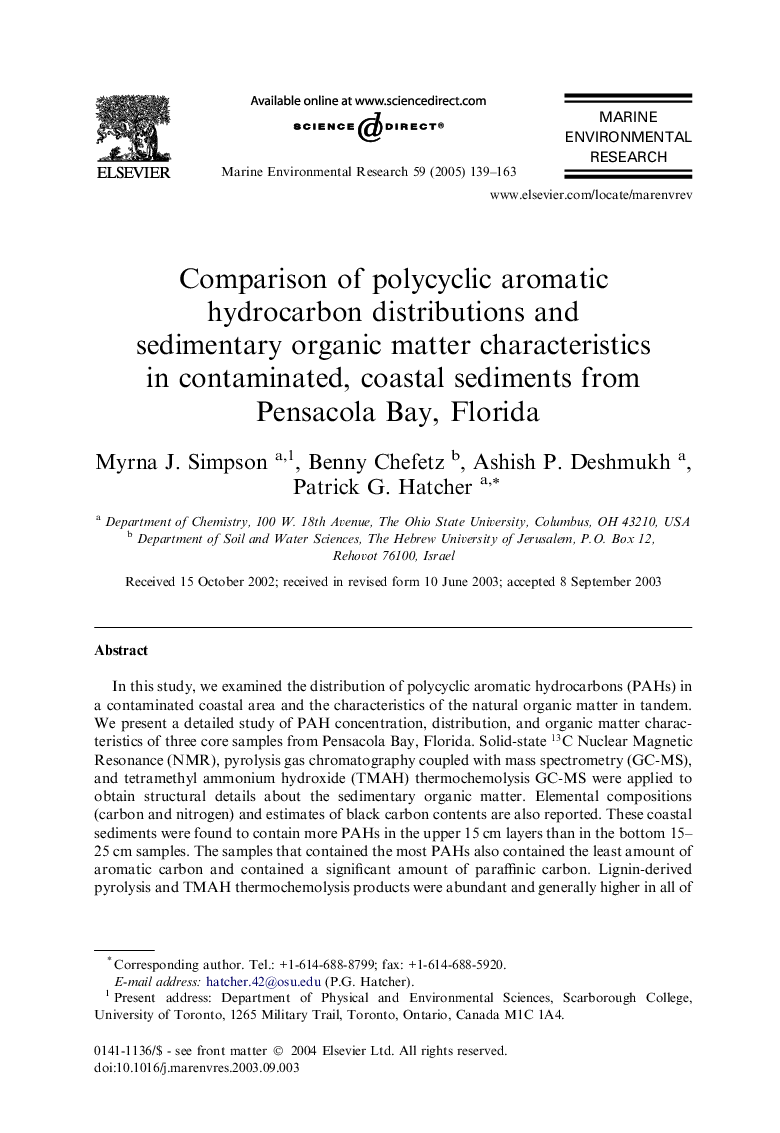| Article ID | Journal | Published Year | Pages | File Type |
|---|---|---|---|---|
| 9484443 | Marine Environmental Research | 2005 | 25 Pages |
Abstract
In this study, we examined the distribution of polycyclic aromatic hydrocarbons (PAHs) in a contaminated coastal area and the characteristics of the natural organic matter in tandem. We present a detailed study of PAH concentration, distribution, and organic matter characteristics of three core samples from Pensacola Bay, Florida. Solid-state 13C Nuclear Magnetic Resonance (NMR), pyrolysis gas chromatography coupled with mass spectrometry (GC-MS), and tetramethyl ammonium hydroxide (TMAH) thermochemolysis GC-MS were applied to obtain structural details about the sedimentary organic matter. Elemental compositions (carbon and nitrogen) and estimates of black carbon contents are also reported. These coastal sediments were found to contain more PAHs in the upper 15 cm layers than in the bottom 15-25 cm samples. The samples that contained the most PAHs also contained the least amount of aromatic carbon and contained a significant amount of paraffinic carbon. Lignin-derived pyrolysis and TMAH thermochemolysis products were abundant and generally higher in all of the samples in comparison to those reported for modern coastal sediments, indicating a large flux of terrestrial carbon. The black carbon contents were found to range from 4.3% to 6.8%, which are significantly lower than other reports of black carbon in sediments, which represent as much as 65% of the total organic carbon content. The low black carbon content suggests that this type of refractory carbon may not be as responsible for regulating PAH distribution as indicated by other researchers.
Related Topics
Physical Sciences and Engineering
Earth and Planetary Sciences
Oceanography
Authors
Myrna J. Simpson, Benny Chefetz, Ashish P. Deshmukh, Patrick G. Hatcher,
